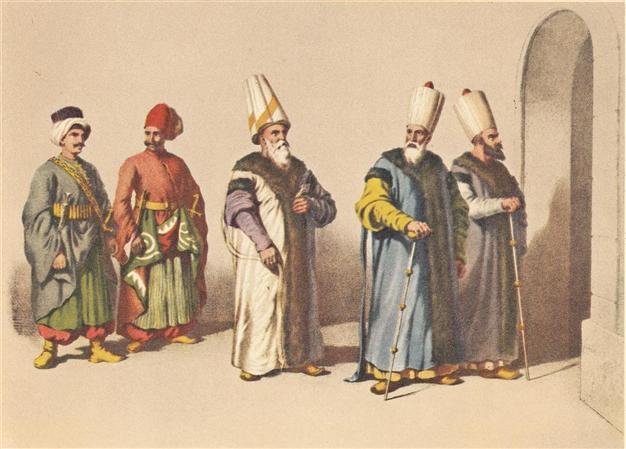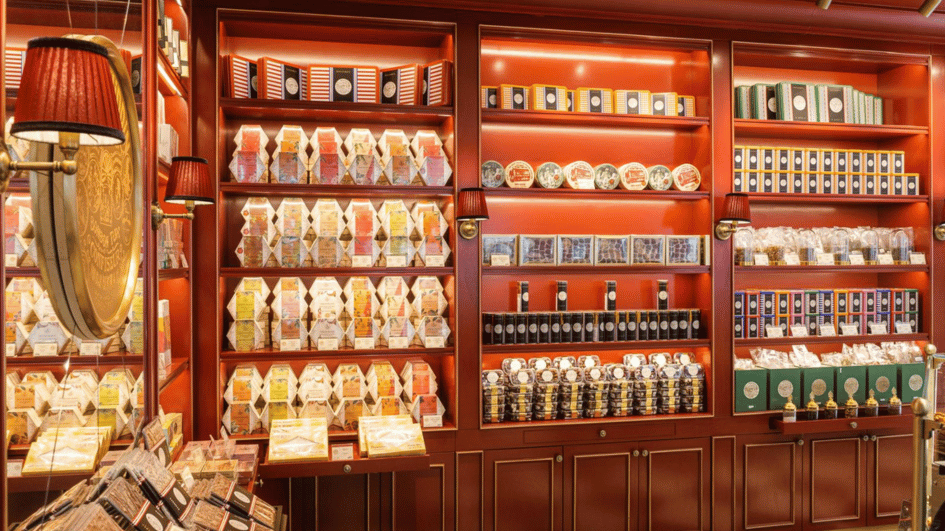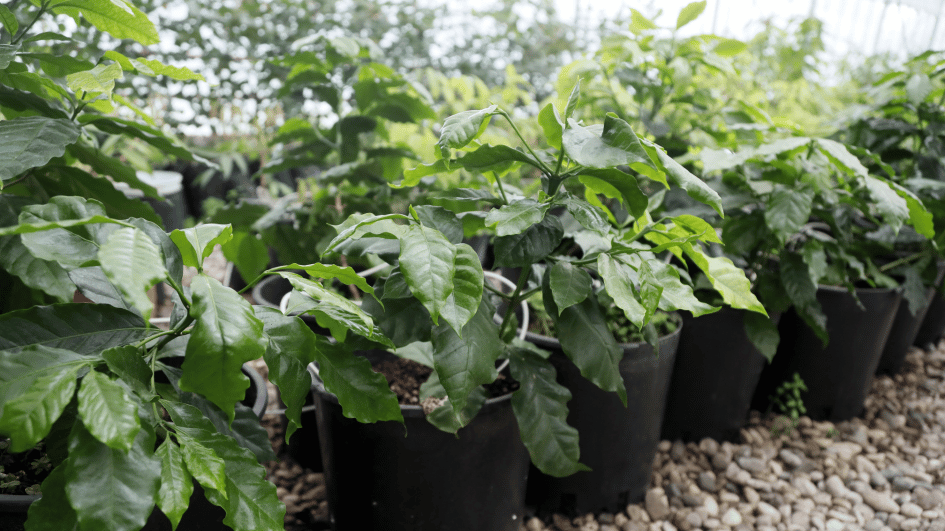Depicting Ottoman fashion apparel
Niki GAMM

Two running attendants, Grand Vizier, Superintendent of the Ushers, Chief of the halberdier corps painted by Arif Mehmed Paşa.
Ottoman historiography has a history of illustrating books, not the chronicles but rather volumes that were dedicated to special occasions, such as weddings and circumcision festivities. While costumes were portrayed with some accuracy, the idea of just depicting the different types of clothing worn by Ottoman officials does not seem to have occurred to anyone, perhaps because Islamic tradition holds the human figure should not be portrayed. Thanks largely to the work of Ottoman Armenian interpreter and later Swedish ambassador, Ignatius Mouradgea d’Ohsson (1740–1807), we have striking portraits of individuals and their clothing. He produced a book that covered the aspects of the Ottoman Empire, which was published in Paris in 1784. The “Tableau Général de l’Empire Othoman” contained many engravings that shed light on Ottoman life at the end of the eighteenth century; however, d’Ohsson had a great deal of difficulty in obtaining pictures that could be engraved and printed, often having to arrange for artists in Istanbul to work secretly. His work was published in two editions: one extremely large and expensive and another of smaller size and less expensive. The pictures that were reproduced were also to be found translated into English and German, leading to their popularity throughout Europe. These may have been the source of inspiration for two later artists – Arif Mehmed Paşa and Jean Brindesi.
Tradesman apprentice, master, sailor,
fireman as painted by Jean Brindesi.
Arif Mehmed Paşa (1808-1865) is considered one of the leaders of the western style of painting in Turkey. It is hard to think of him as an artist because he spent his whole working life in the Ottoman army. He was a mere six months old when Mahmud II ascended to the throne and slowly instituted westernizing reforms in the Ottoman Empire. His father was a kapı cuhadar (door warden). He was only 14 when he began to work in a state office related to land. After four years there he requested a transfer to a military body founded by Mahmud II where he was a secretary. With the rank of private, barely four months later he attained sergeant major. He never looked back as he moved up the ranks to reach that of field marshal for Arabia. He also served as governor of Damascus, Harput, Erzurum, Silistre and Edirne before he died in 1865. Although he was in charge of the Ottoman gendarmerie in 1851 and later in 1853 in Istanbul, it is hard to see how he could find the time to paint and found a museum.
Although Arif Paşa was thoroughly committed to the army, he had a deep and abiding interest in Turkish culture and history. He spent some forty years studying Turkish historical sources as he moved up through the ranks. Somewhere along the way, he developed a talent for drawing and produced a series of pictures detailing the clothes Ottoman state officials wore. He prepared these pictures under the name “Mecmua-i Tesavir-i Osmaniyye” (The Collection of Ottoman Pictures). Although his work was supposed to come out in 12 volumes, only one volume was actually published in French in Paris in 1863 and in Turkish the same year. The other 11 volumes have been lost. The published volume is considered to be “the first illustrated book in Turkey.” Some of the paintings appeared in the Tasvir-i Efkar newspaper as a series at the same time.
What is amazing is the praise heaped onto Arif Paşa for his portraits, the harmony of their colors and tones, the maturity of attitude and delicate detail, the artist’s control over his pen and watercolors. The clothing reflects the time when the Janissaries were still on the scene (before 1826 when the corps was disbanded). While one might be inclined to think only the military wore specific clothing, among the Ottoman’s tradition, clothing laws determined what state officials wore. In addition to the drawings of the various official costumes in use, Arif Paşa wanted to establish a museum so everyone would have a chance to see them. He personally had mannequins made in Vienna and a building in Sultan Ahmed was set aside for their display as the Janissary Clothing Museum, a museum that predates the Istanbul Archaeological Museums by decades. Eventually this display was moved to the Military Museum at Hagia Irini during the Second Constitutional Period, but they were not kept up.
Jean Brindesi
What makes one question the value of Arif Paşa’s work is that he was not the first artist in Turkey to draw pictures of official clothing. A young Italian artist, Giovanni Jean Brindesi, who was born in 1826 (d. 1888), was in Istanbul by the 1850s. There is scant evidence for his life, although it is known he lived in Galatasaray on Yeniçarşı Street. His first book was published in Paris in 1855 and was entitled “Elvicei Atika. Les Anciens Costumes. Musée des costumes turcs de Constantinople” (Ancient Clothes. Istanbul Turkish Clothing Museum). Brindesi is known to have used the costumes on the mannequins at the so-called Janissary Museum for his pictures, that is, the museum that Arif Paşa had been instrumental in getting built. We can at least deduce the museum was established prior to 1855, as there is little information about it. [A review of it appeared in the New York Times in the 1860s.].
Brindesi worked in both water color and oils. He depicted the various costumes that belonged to the officials of the Mahmud II period just as Arif Paşa was to do in his book eight years later. In the Italian’s book are the grand vizier, the chief of military judges, Janissary officers, the şeyh-ül-islam, the black eunuchs, as well as sailors, bombardiers and privates. These are the same subjects that Arif Paşa took up; it may be that the similarity between his work and that of Brindesi was the reason why only one volume of Arif Paşa’s drawings was ever published. It is almost impossible to tell the difference between Arif Paşa’s paintings and those of Brindesi.
The Italian artist produced a second book, “Souvenir de Constantinople” in the 1860s in which he portrayed daily life in the city, including women, cemeteries, entertainment and the like. This volume, more than his first, placed him among the orientalist painters who flooded the European markets with depictions, often quite fanciful, of life in the Middle East.
















